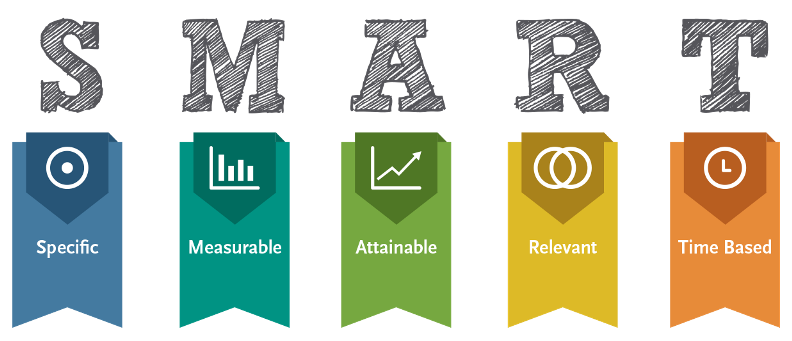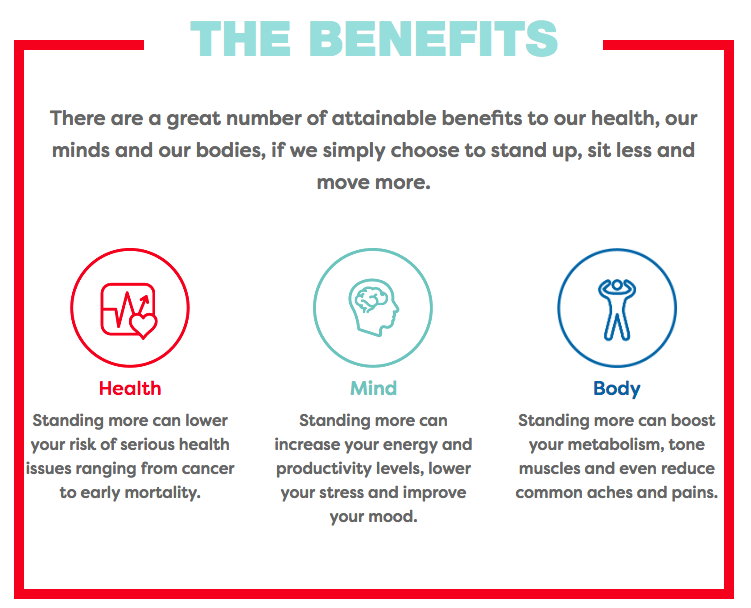2019 Weekly Wellness Challenges
Goal Setting
Make some goals: one for this week, one for this month, and one for this year!

- SPECIFIC: What do you want to accomplish by setting this goal? (make it simple, significant and sensible!)
- MEASUREABLE: How will you measure whether or not you've achieved your goal? (make it meaningful and motivating)
- ATTAINABLE: Is this goal possible - do you have the knowledge, skills, resources, and abilities to reach this goal? (achievable)
- RELEVANT: What is the reason, purpose, or benefit of accomplishing your goal? (reasonable and realistic)
- TIME-BASED: When do you want to complete your goal by? (time-sensitive)
Need help and examples writing SMART goals. Click here for more information.
Sleep
Get the recommended 7-9 hours/night of sleep.

Did you know that the amount of sleep that you get each night is important because it contributes to your health and well-being? Decreased sleep can lead to an increased risk of obesity, high blood pressure, heart disease, diabetes, and stroke.1
- It's not just about HOW MUCH sleep, but also the QUALITY.1
- Signs of poor sleep quality include:
- feeling tired even after getting enough sleep
- repeatedly waking up during the night
- Signs of poor sleep quality include:
- Tips for better sleep1
- Make a routine: go to bed at the same time every night and wake up at the same time every morning even on the weekends
- Set your space: make sure your bedroom is quiet, dark, relaxing, and a comfortable temperature
- Skip the screen time: turn off all electronics (including your cell phone, laptops, and tvs) at least 30 minutes before going to bed
- Eat earlier: avoid large meals or caffeine before bed
- Don't forget to exercise: physical activity during the day can help improve the amount of quality of your sleep
For more information on sleep:
1. Are you getting enough sleep? Centers for Disease Control and Prevention. https://www.cdc.gov/features/sleep/index.html. Published April 24, 2017. Accessed February 4, 2018.
Sitting Disease
Fight sitting disease!
Did you know the average person sits for 12 hours a day? Fight sitting disease and stand up more.
Sitting Disease: a term coined by the scientific community when referring to metabolic syndrome and the ill-effects of an overly sedentary lifestyle.1
Getting the recommended amount of physical activity a week (150 minutes) DOES NOT reverse the negative effects of sitting. Alternating between sitting and standing every 30 minutes has many health benefits!

For more information on sitting disease click here.
Resources:
- The Facts Behind 'Sitting Disease' and Living Sedentary. JustStand. http://www.juststand.org/the-facts/. Accessed February 4, 2018.
Stretching
Get a stretch in before bed: even 5-10 minutes of stretching has many health benefits.
- Stretching not only helps to improve flexibility but can help improve performance during physical activity, decrease your risk of injuries, enable your muscles to work optimally and improve your joint's range of motion.1

Stretching tips:
- Stretching isn't a warm up: it's not a good idea to stretch cold muscles; warm up before stretching with a light jog or walk or get in a good stretch after your workout
- Focus on major muscle groups: this includes your calves, thighs, hips, low back, neck and shoulders
- Don't bounce: bouncing as you stretch can injure your muscles and contribute to tightness - stretch in a smooth movement
- 30 second rule: you may be used to counting to 10 (seconds) for a stretch, but it takes muscles a minimum of 30 seconds to relax enough to get a good stretch in
- Looking for more tips on stretching: click here
Resources:
- Stretching is not a warm up! Find out why. Mayo Clinic. https://www.mayoclinic.org/healthy-lifestyle/fitness/in-depth/stretching/art-20047931. Published February 21, 2017. Accessed February 4, 2018.
Nutrition
According to the US Department of Health and Human Services, Americans do not consume the recommended amounts of vegetables, fruits, whole-grains, dairy products, and oils per day.1

- Everything you eat or drink can potentially affect your health, so it's important to find a healthy eating style and maintain it.
- Building a healthy meal:2
- Make 1/2 your plate fruits and veggies
- Choose whole grains: look for words such as "100% whole grain" or "100% whole wheat"
- Add lean protein: turkey, chicken, beef, pork, eggs, nuts, beans, tofu or fish
- Try new foods (such as mangos, lentils, kale, quinoa)
- 10 tips to a great plate
- For more nutrition information click here
Helpful Handouts:
- Making healthy snacks
- Choosing better beverages
- Staying fit on campus
- Mini fridge makeover
- Navigating the dining hall
- Get more fruits and veggies
- Redo your coffee stop
- Save money at the grocery store
Resources:
- Facts & Statistics. HHS.gov. https://www.hhs.gov/fitness/resource-center/facts-and-statistics/index.html. Published January 26, 2017. Accessed February 4, 2018.
- Dietary Guidelines. Choose MyPlate. https://www.choosemyplate.gov/dietary-guidelines. Published February 5, 2016. Accessed February 4, 2018.






